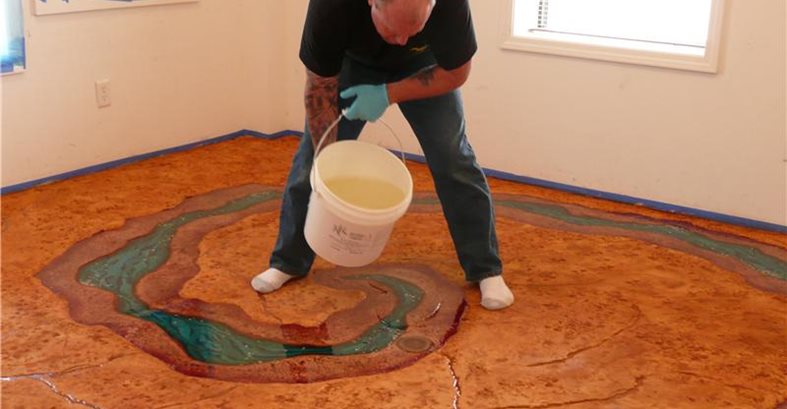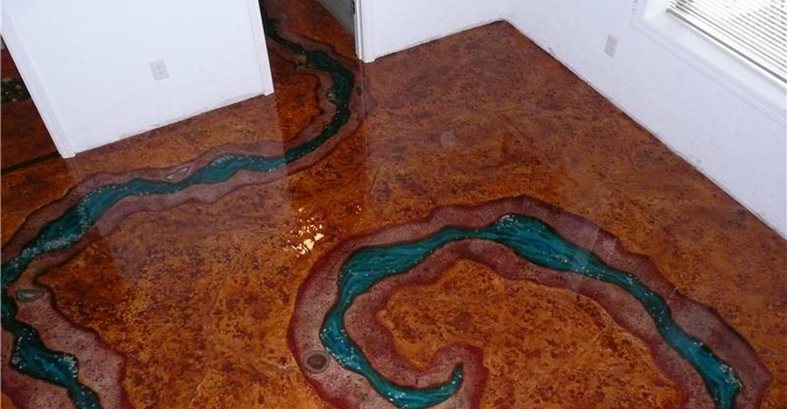
This multi-colored concrete floor overlay displays the creative uses of concrete. Click through this slideshow to see how it was done.
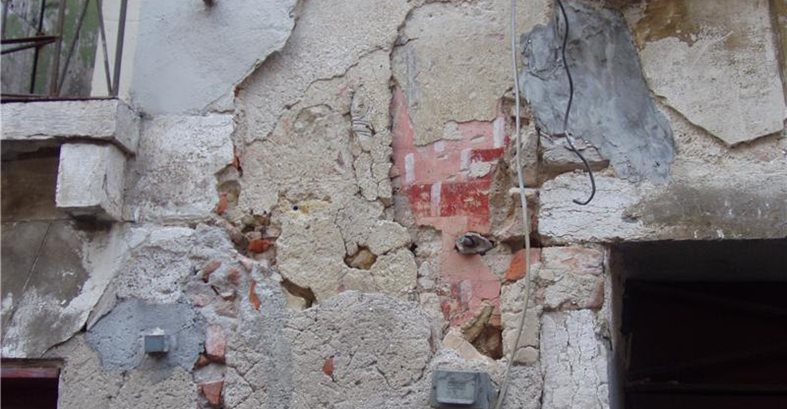
Sometimes the inspiration behind the best decorative concrete floor designs comes from unlikely sources. Bob photographed this crumbling wall façade on a trip to Venice. He borrowed from the interesting layering effects, and then gave it his own Van Gogh-like twist using vibrant colors and sparkling accents of glass, geode rock and Mother of Pearl.
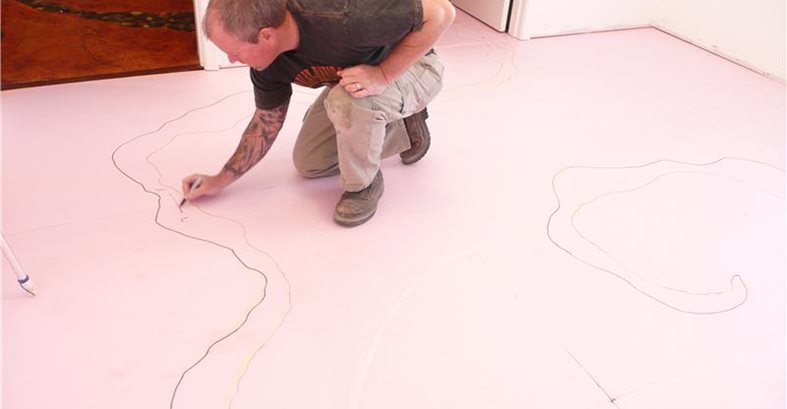
Bob covers the entire floor with pink foam and then draws, freehand, what will later become the veins, or recessed areas, running like a river through the floor. First, though, he filled the joints in the floor and then ground it smooth.
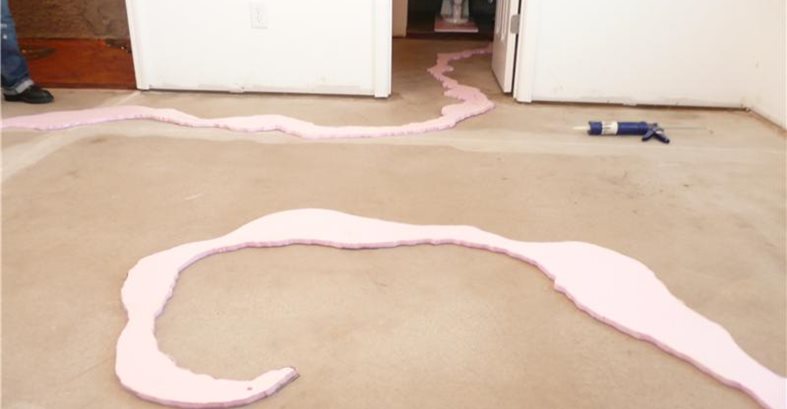
After cutting out and removing the foam around the veins, he tacks down the remaining foam with silicone caulk.
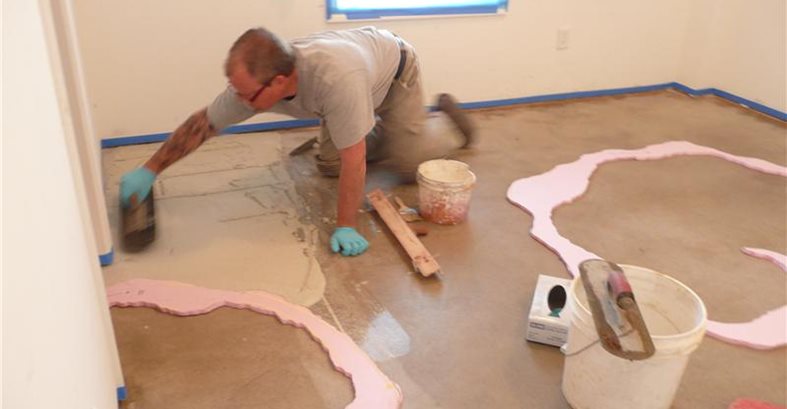
Next, he trowel applies the overlay material, using Mirastamp from Miracote—a polymer-modified, cementitious, stampable overlay system.
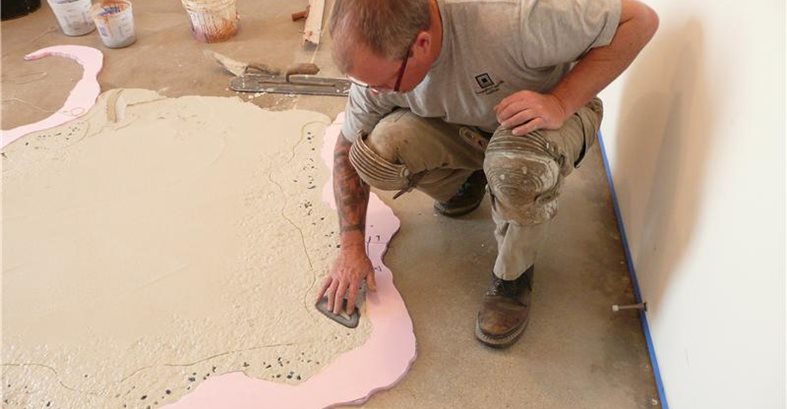
Bob textures out from the foam about 10 inches and then sets the embedments of geodes, shells and glass.
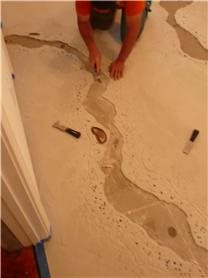
The foam is then stripped out, followed by grinding of the areas where the silicone was holding the foam down.
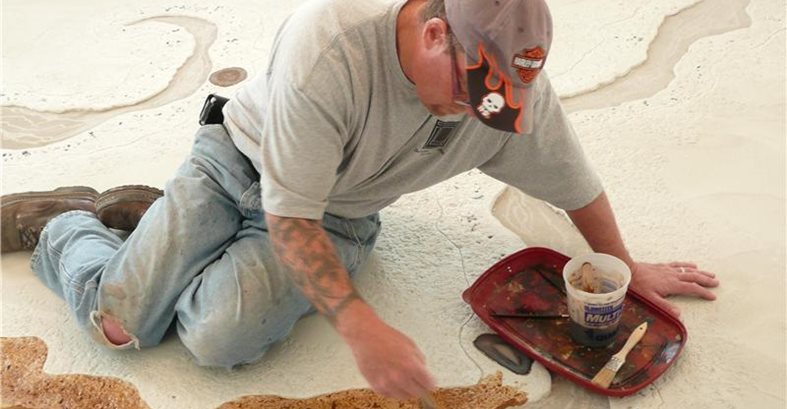
Bob brush applies dye, using a water-based product from DCI.
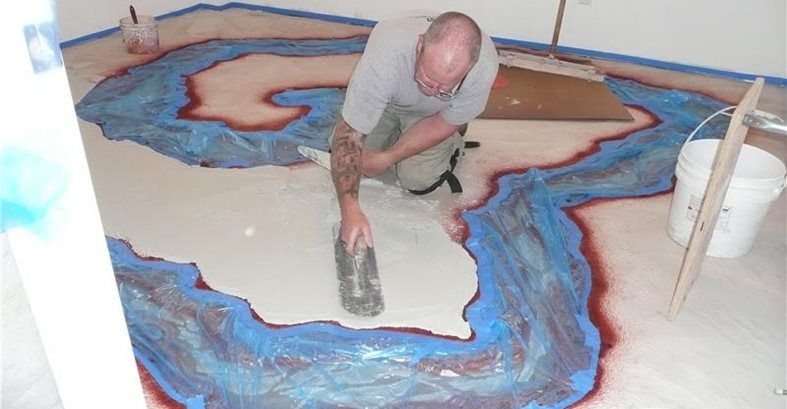
The second layer of Mirastamp is applied and then textured.
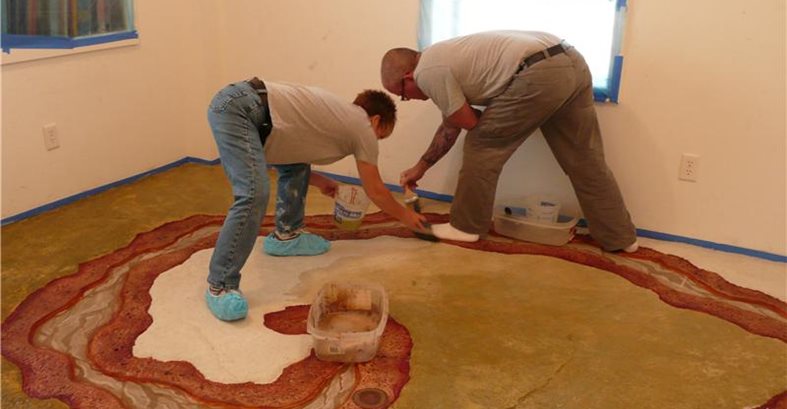
Bob and his wife, Lee Ann, apply acid stain from Kemiko, working with different dilutions of stain in the colors of Malay Tan and Cola.
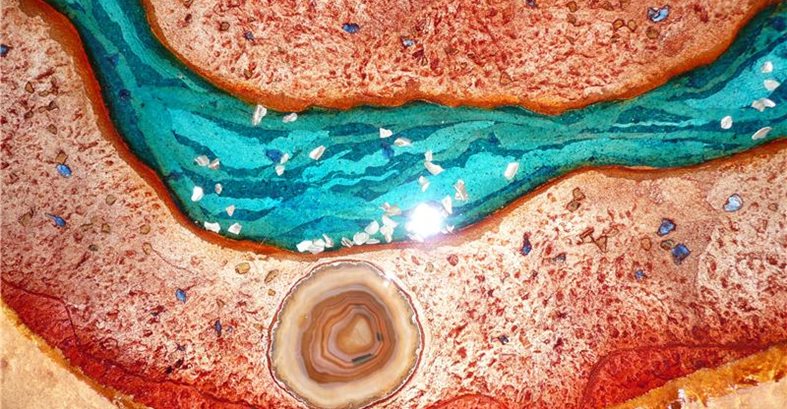
Bob further embellishes the floor with two colors of DCI solvent-based dye diluted with water, along with sparkling accents of Mother of Pearl. The floor then receives another layer of casting epoxy.
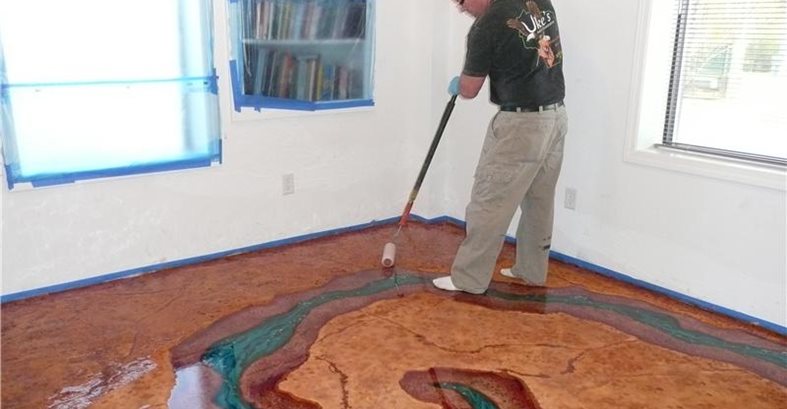
Final sealing of the floor with Key Resin #510 100%-solids epoxy followed by two topcoats of Key Resin #450 polyurethane.

The finished floor before the addition of decorative concrete baseboards (see next photo).
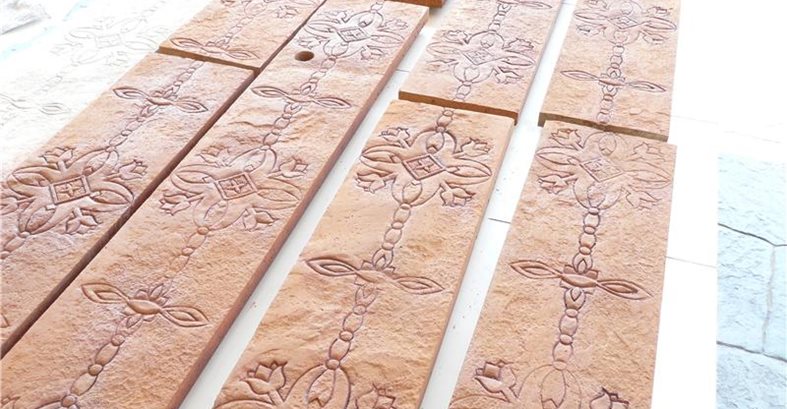
Decorative Concrete Baseboards.
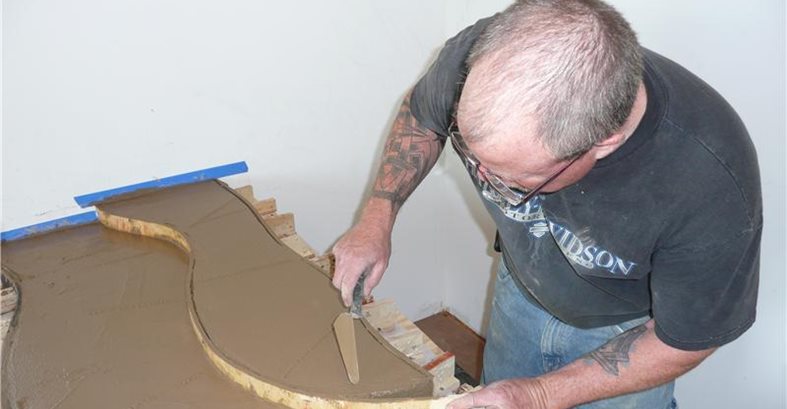
The next task is to form and pour the coordinating countertops. Bob creates the curves in the form using "wiggle wood" – a highly bendable plywood. After using a hand trowel to smooth the countertop surface, he tops it with an overlay that is textured and colored similarly to the floor surface.
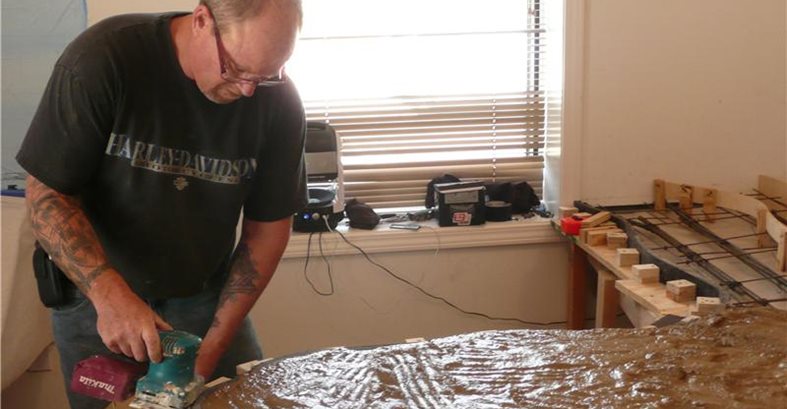
The next task is to form and pour the coordinating countertops. Bob creates the curves in the form using "wiggle wood" – a highly bendable plywood. After using a hand trowel to smooth the countertop surface, he tops it with an overlay that is textured and colored similarly to the floor surface.
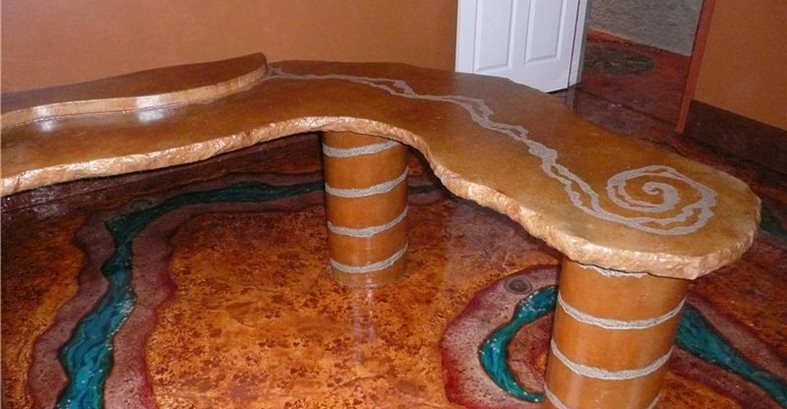
The finished countertop. The legs were created with column forms and given a spiral motif that echoes the swirls in the floor.
Previous
Next
What does Bob Harris, president of The Decorative Concrete Institute and the star of The Concrete Network's "Floor Me" video series, do in his spare time, when he's not traveling around the world teaching hands-on training seminars, shooting how-to videos, or writing books? What he loves best, of course-getting wildly creative with theme-inspired decorative concrete.
For his latest project-a richly textured, multicolored concrete floor overlay with coordinating concrete baseboards and countertops-the brainstorm began with a deteriorating wall Bob spotted on a trip to Venice, Italy. "When I explain the inspiration for this floor, people absolutely crack up because it looks nothing like the floor," he says. "But it was the layering in the wall that gave me the idea."
Bob applied the overlay to a floor in his DCI office in Temple, Ga., where he can now be reminded of the Old World charm of Venice without leaving home.
Decorative Concrete Institute
Submit Your Own Project Photos
Return to Concrete Overlay Projects
Read More About Concrete Overlays










